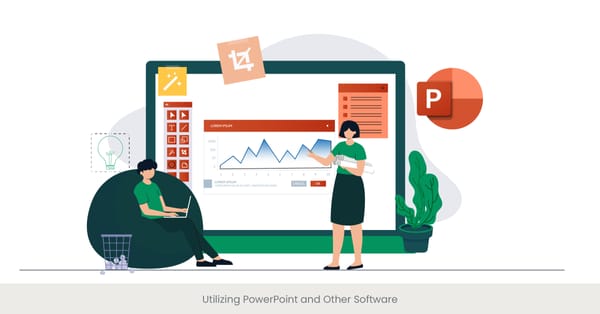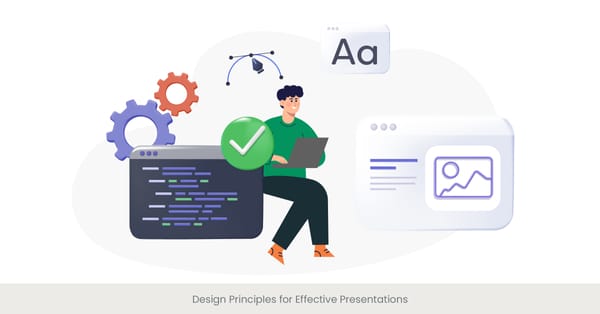
Benefits of Interactive Learning Environments
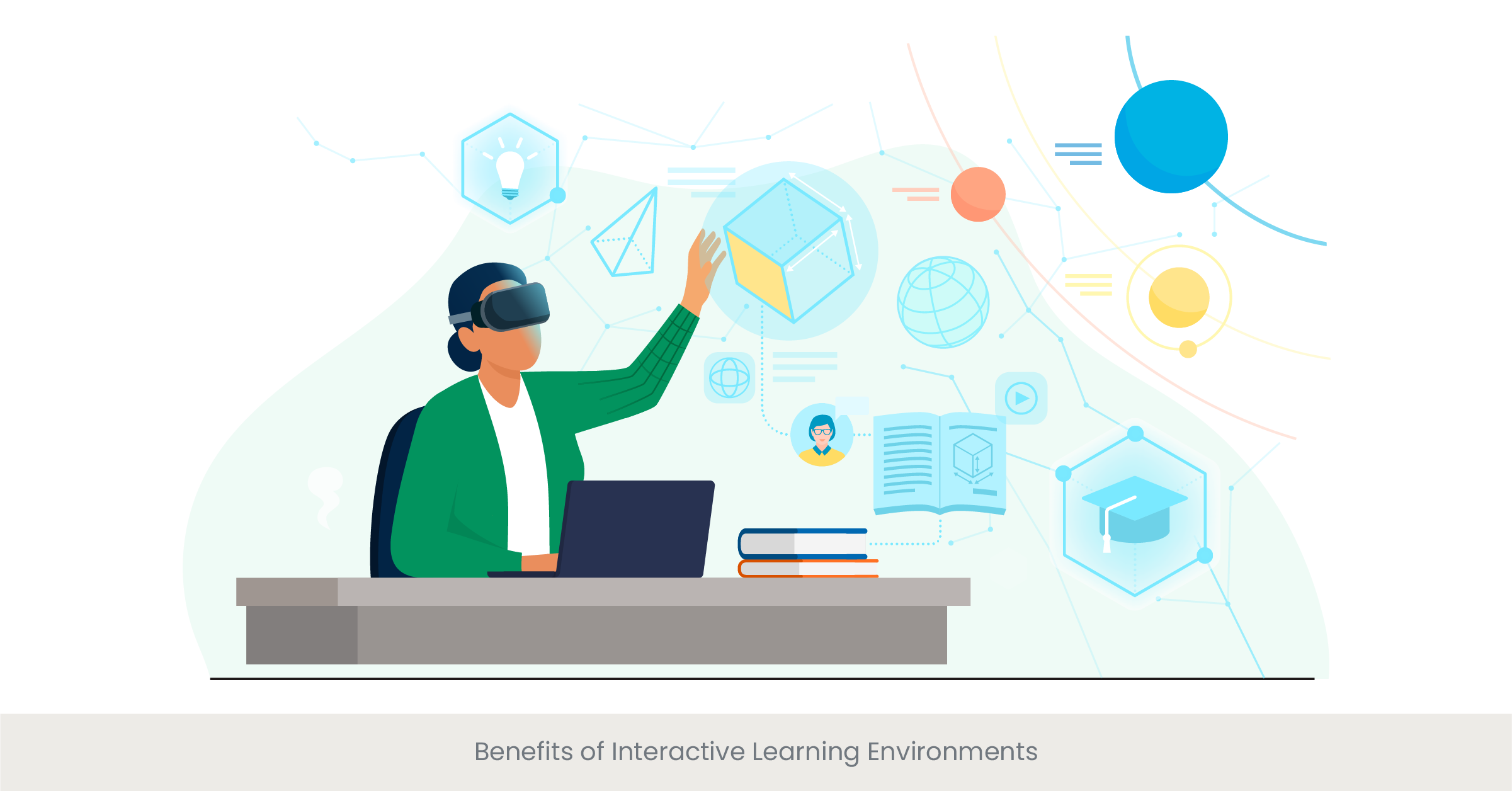
Introduction to Interactive Learning Environments
Interactive learning environments are designed to engage participants actively, transforming the learning experience into a dynamic and participatory process. These settings leverage various methodologies that promote interaction, collaboration, and hands-on learning, significantly enhancing the absorption and retention of new information. By participating in a presentation skills workshop set in such an environment, attendees can expect a comprehensive immersion into practical skills and theoretical knowledge.
Background on Interactive Learning
Historically, educational models were predominantly lecture-based, focusing on passive reception of information. However, the evolution towards interactive learning began as educators and trainers observed significant improvements in learner engagement and outcome when interaction was encouraged. Presentation workshops and training sessions now frequently adopt these interactive principles, incorporating real-time feedback, group activities, and peer collaboration to enrich the learning experience.
Real-World Applications and Examples
In real-world settings, interactive learning environments manifest through various formats like workshops, seminars, and group projects. For instance, a typical presentation training workshop might involve participants in role-playing exercises to practice public speaking skills or group discussions to enhance communication skills. These methods ensure that the theoretical knowledge gained is immediately put into practice, enabling participants to refine their techniques with instant feedback from experienced professionals.
References and External Validation
Studies have consistently shown that interactive learning environments yield higher retention rates and more positive outcomes in skills development. According to a report by the Association for Talent Development, interactive training methods, including those used in presentation skills courses, can increase retention rates by up to 75%. This statistic underscores the effectiveness of such environments in fostering essential skills like public speaking and presentation, crucial for professional development in any field.
Engaging in Group Activities and Discussions

Introduction to Group Activities in Workshops
Group activities and discussions are integral components of effective presentation workshops. These interactive segments are designed to cultivate a collaborative learning atmosphere, where participants can exchange ideas, offer critiques, and collectively explore various presentation techniques. Engaging in these activities helps individuals not only to refine their own skills but also to witness and learn from the diverse approaches of their peers.
Background on the Importance of Group Interaction
The foundation of incorporating group activities into learning environments lies in the educational theory of social constructivism, which posits that knowledge is constructed most effectively through social interaction. In the context of presentation skills training, this approach allows participants to engage directly with the material and each other, enhancing their understanding and application of effective presentation skills through active participation and shared experiences.
Real-World Applications and Examples
For example, during a presentation skills workshop, participants may be divided into small groups to develop a short presentation based on a common theme. This activity encourages not only the use of presentation software like PowerPoint or Google Slides but also the practice of critical soft skills such as teamwork and communication. Furthermore, such group engagements provide a platform for practicing public speaking in a less intimidating setting before presenting to the entire workshop group.
References and External Validation
Research highlights the effectiveness of group work in enhancing communication skills and building confidence. A study published in the Journal of Business Communication found that participants who regularly engaged in group activities during presentation training workshops showed a 30% improvement in their public speaking and presentation abilities compared to those who worked alone. This evidence supports the practice of incorporating collaborative exercises into training sessions to maximize learning outcomes.
Collaborating with Peers on Presentation Projects
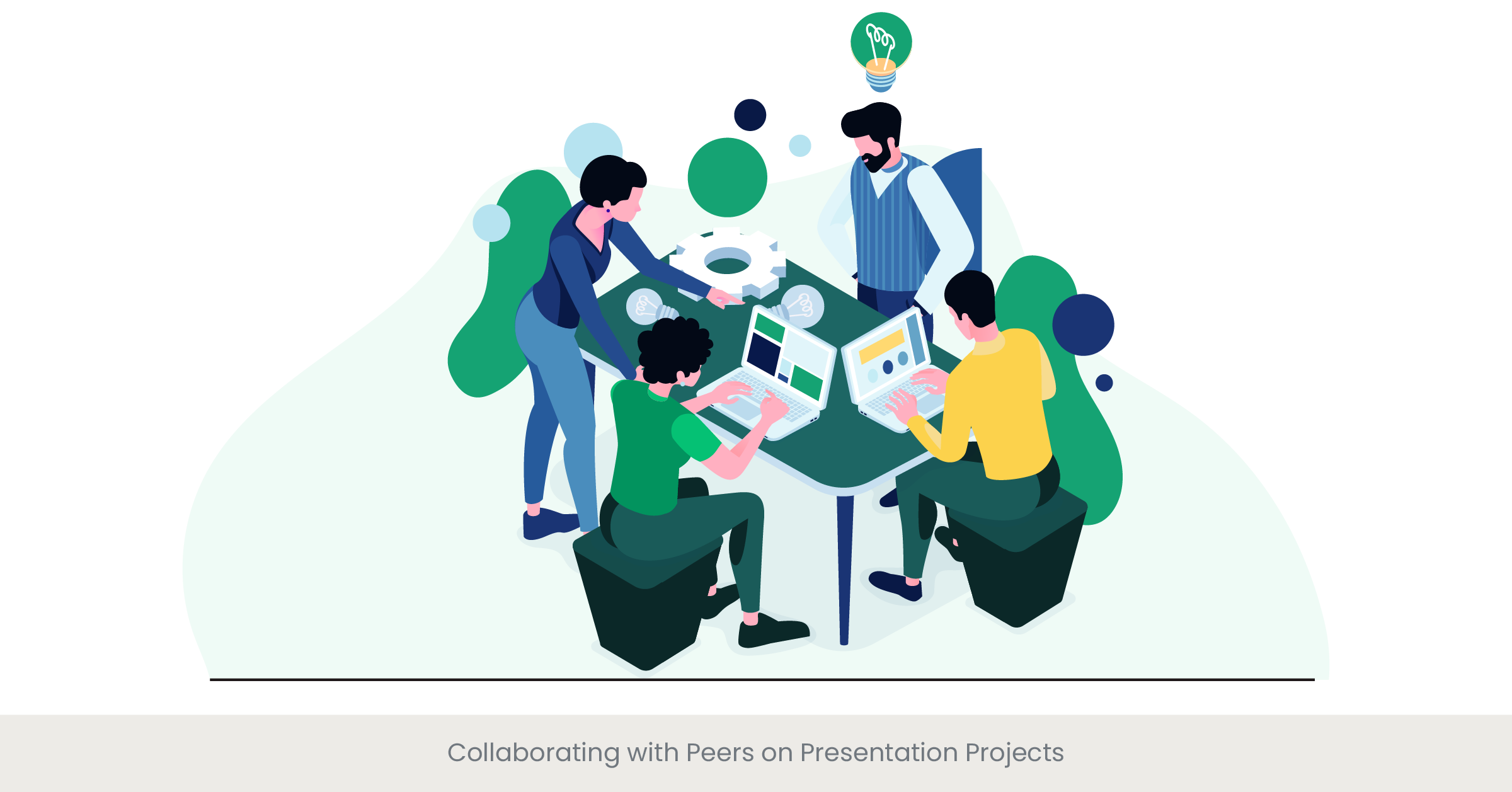
Introduction to Peer Collaboration
Collaboration with peers in presentation projects is a critical aspect of interactive workshops that focuses on developing presentation skills. This approach not only enhances learning through mutual support and idea exchange but also mirrors real-world business scenarios where teamwork and cooperative efforts are key to success. Such collaborative settings allow participants to explore diverse perspectives and integrate collective insights into their presentation strategies.
Background on Collaborative Learning
The concept of collaborative learning extends back to educational theories emphasizing the social nature of learning, where knowledge is seen as a product of the environment and interactions within it. In presentation skills workshops, this translates into structured activities where participants work together to design, refine, and deliver compelling presentations. This method not only sharpens individual presentation skills but also bolsters group problem-solving and decision-making abilities.
Real-World Applications and Examples
In practice, peer collaboration might involve participants in a hands-on workshop being tasked with creating a unified presentation on a challenging topic, requiring them to delegate tasks, manage time, and synergize their unique skills. This method is particularly effective in enhancing the practical experience of each participant, as they learn not just to present but to collaborate effectively under pressure, mimicking the demands of professional environments.
References and External Validation
According to educational research, collaborative projects can lead to more profound learning and better retention of knowledge. A study by Harvard Business Review suggests that professionals who have undergone collaborative presentation training are more likely to succeed in high-stakes environments due to improved communication skills and confidence in their abilities. This data underlines the importance of interactive elements in presentation training programs, emphasizing the value of teamwork in professional development.
Receiving Real-Time Feedback and Guidance
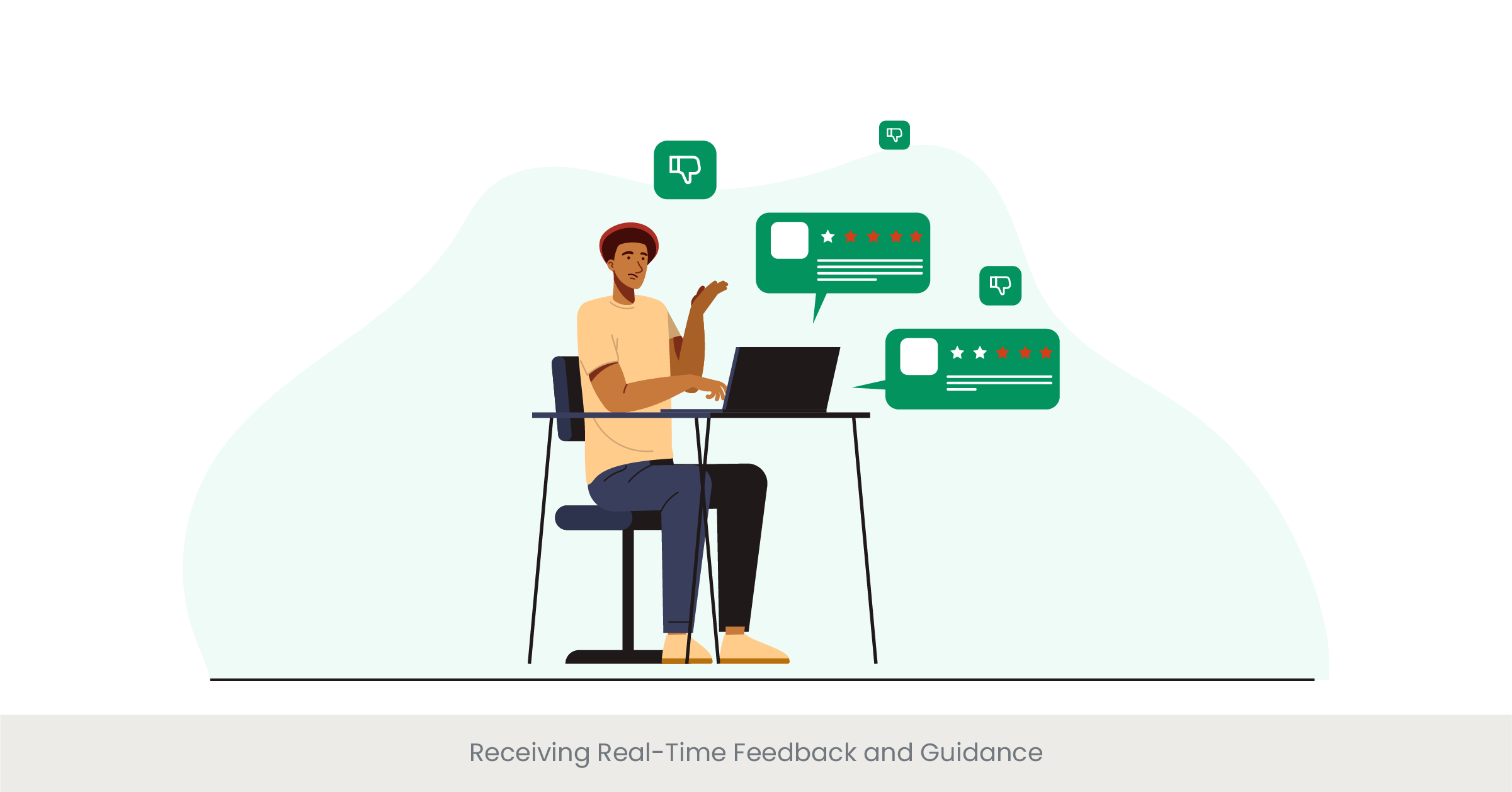
Introduction to Real-Time Feedback
Real-time feedback and guidance are pivotal in interactive presentation workshops, where the immediacy of the feedback helps participants quickly understand and rectify their presentation techniques. This direct and timely input from experienced professionals or peers ensures that learners can make immediate adjustments, enhancing their learning curve and effectiveness in presenting.
Background on Feedback in Learning
Feedback has long been recognized as a crucial element in educational settings for its role in reinforcing learning and motivating improvement. In the context of presentation skills training, feedback is not just about correction but about fostering a supportive environment where constructive criticism leads to positive changes and personal growth. This process is essential for refining both the content and delivery of presentations, making them more impactful and engaging.
Real-World Applications and Examples
An example of real-time feedback can be seen in interactive workshops where participants present their slides or speeches in front of the group and receive immediate critiques. For instance, a participant might use certain presentation techniques or tools, such as PowerPoint or Google Slides, to deliver their message. Feedback might then focus on improving their storytelling skills, body language, and the effective use of visuals, ensuring they learn from each presentation and progressively enhance their skills.
References and External Validation
Studies highlight the effectiveness of immediate feedback in learning environments. According to research from the University of California, participants who received real-time responses during presentation skills courses significantly improved their ability to communicate and engage with the audience, with a noticeable advancement in their overall presentation prowess. This research underscores the value of incorporating feedback mechanisms into training sessions to cultivate skilled, confident public speakers.
Practicing Presentation Techniques in a Safe Environment
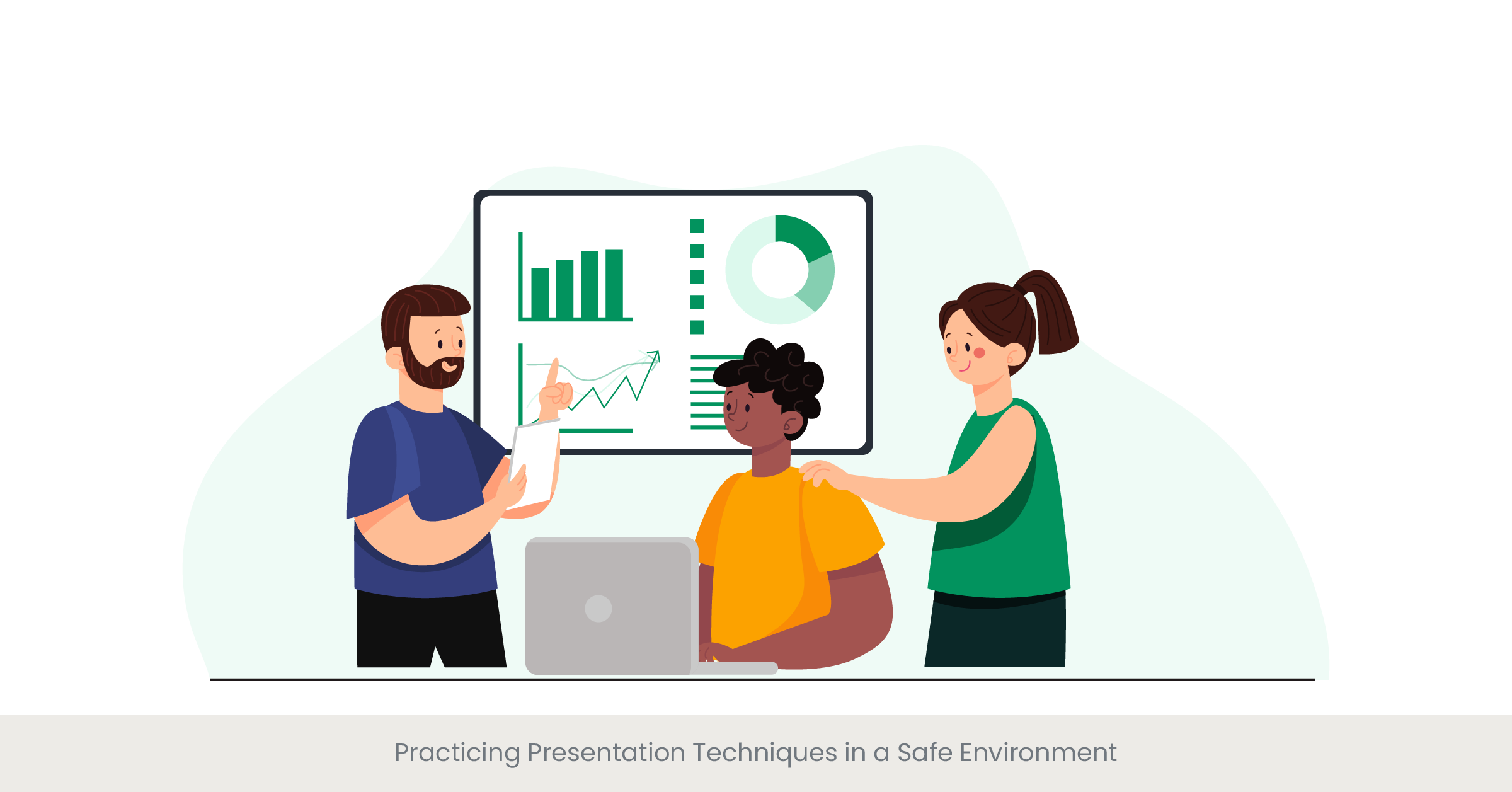
Introduction to Safe Learning Environments
A safe learning environment in the context of a presentation skills workshop refers to a supportive and non-judgmental space that encourages risk-taking and experimentation with different presentation styles and techniques. This setting is crucial for participants, allowing them to practice and hone their skills without the fear of harsh criticism or failure, which can be pivotal in developing effective presentation skills.
Background on the Importance of a Safe Environment
The concept of a "safe space" in learning theories emphasizes the importance of psychological safety for effective learning. This idea is particularly relevant in training environments like presentation workshops, where participants are often required to step out of their comfort zones and present in front of peers and instructors. The assurance of a supportive audience and constructive feedback facilitates a more open and enriching learning experience.
Real-World Applications and Examples
In practical terms, a presentation skills training workshop might simulate various speaking scenarios ranging from formal business presentations to more casual talks, providing participants with diverse experiences. For example, participants might be encouraged to use storytelling skills to connect with the audience or experiment with different presentation software tools to enhance their visual impact. The safe environment ensures that they can try these techniques without the immediate pressure of real-world consequences, building confidence and mastery over time.
References and External Validation
The effectiveness of practicing in a safe environment is supported by academic research. A study from Stanford University indicates that learners who are given the opportunity to practice skills in a low-risk setting are more likely to perform confidently and effectively when faced with high-stakes situations. This research highlights the value of environments that prioritize safety and support, as they play a significant role in the development of not just presentation skills but also broader professional capabilities.
Building Confidence Through Interactive Exercises
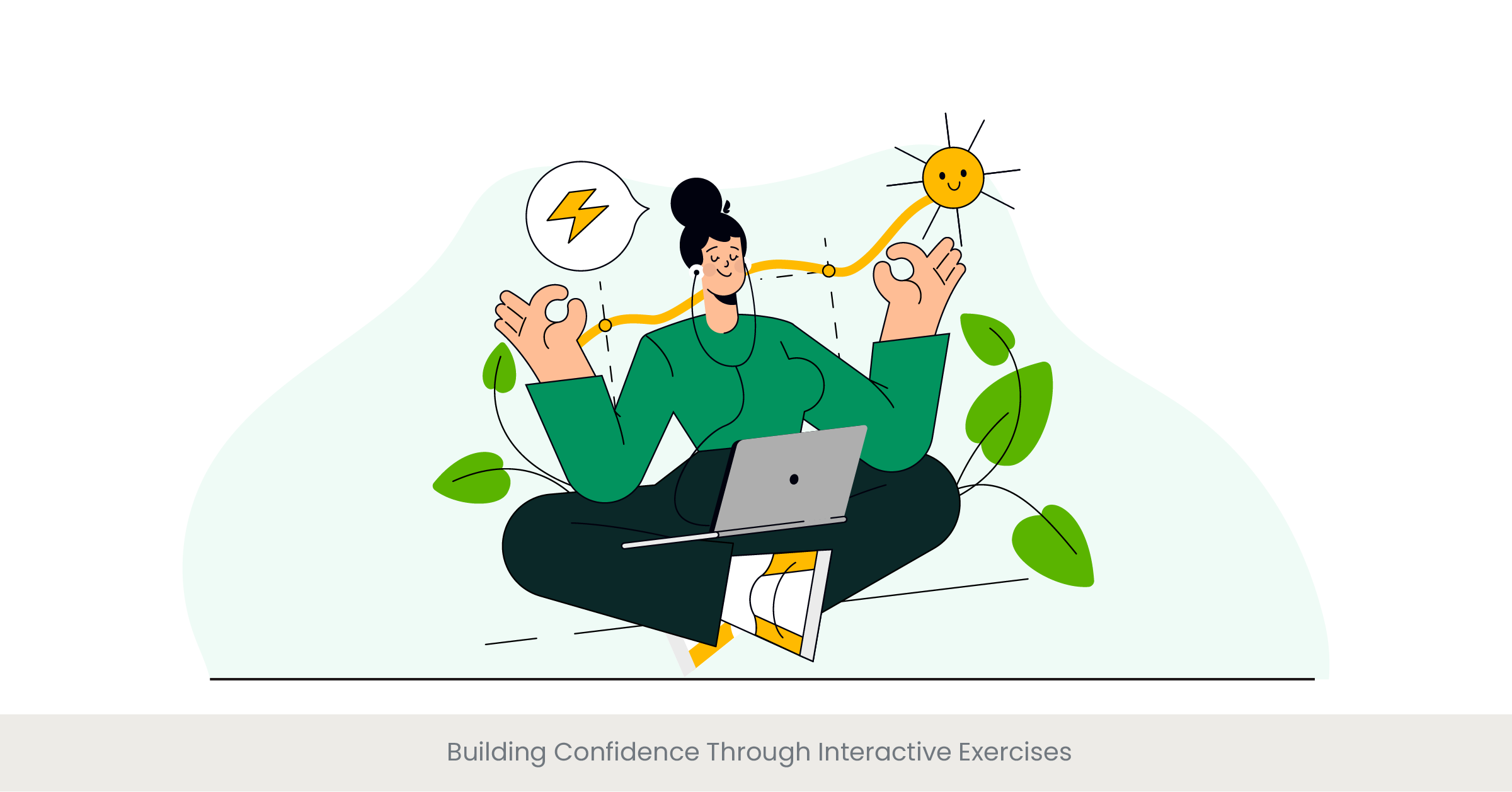
Introduction to Building Confidence
Interactive exercises in presentation workshops are designed to build confidence by gradually exposing participants to various speaking and presentation scenarios. These activities not only improve participants' presentation skills but also bolster their self-esteem and assurance, enabling them to handle diverse audience interactions with poise and confidence.
Background on Confidence Building
The psychology behind confidence building in educational settings is rooted in the principles of experiential learning, where direct experience combined with reflection leads to personal and professional growth. In the context of presentation skills training, interactive exercises provide this experience, allowing participants to engage actively with the content and audience, thereby fostering a sense of competence and self-assuredness.
Real-World Applications and Examples
For instance, an effective presentation skills workshop might incorporate exercises like impromptu speaking, peer-to-peer teaching sessions, or structured group presentations. These activities challenge participants to think on their feet and adapt their communication styles in response to live feedback. As participants overcome these challenges, they build resilience and confidence, which are crucial for any confident public speaker.
References and External Validation
Research supports the effectiveness of interactive exercises in building confidence. A study from the Learning and Development Academy suggests that presentation training workshops that include interactive elements like role-play and peer feedback significantly increase self-confidence among participants. This increase in confidence directly correlates with enhanced performance in subsequent presentations, both in academic and professional settings.
Networking Opportunities with Workshop Participants
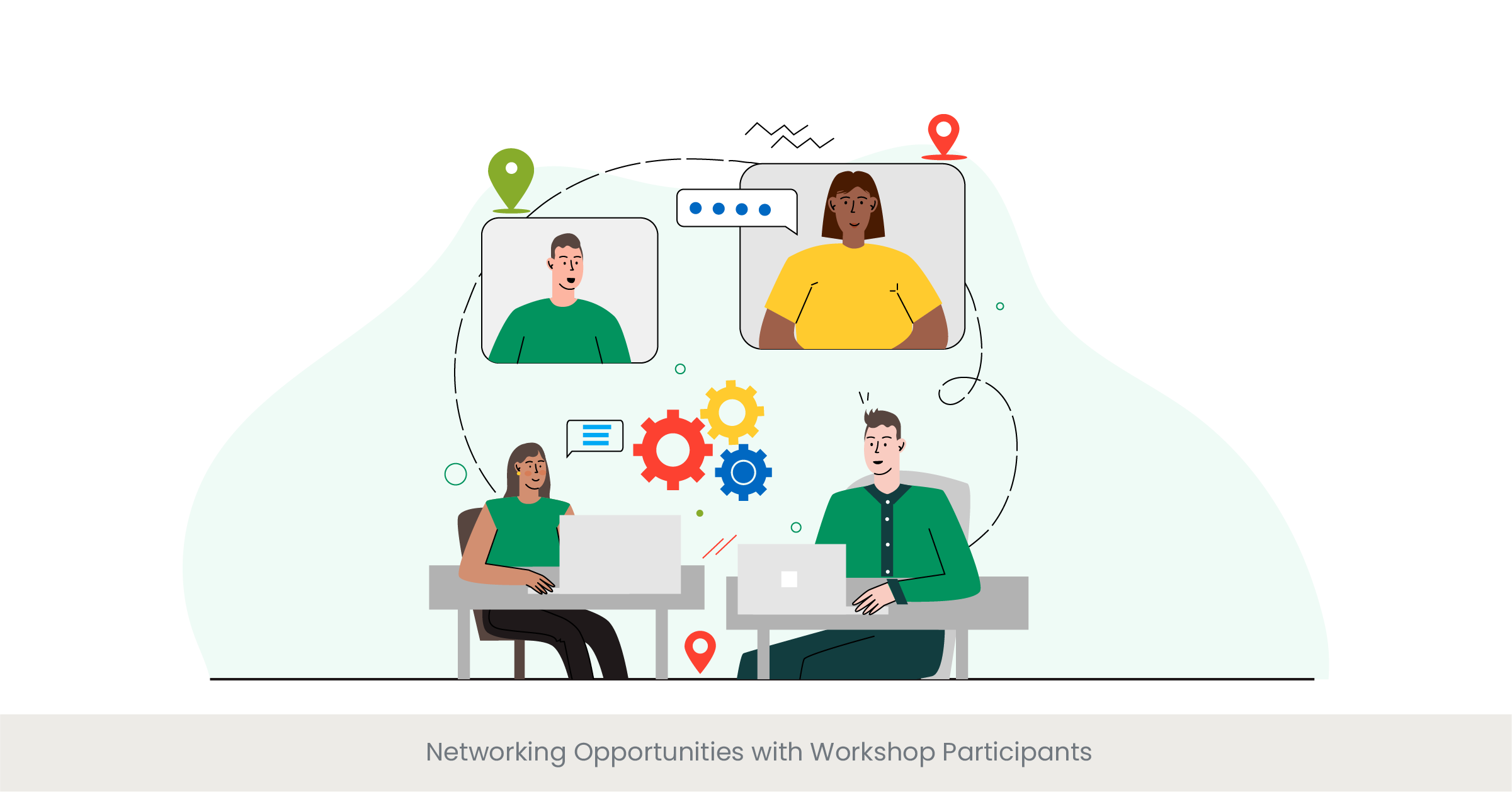
Introduction to Networking in Workshops
Workshops not only serve as platforms for learning and practice but also as valuable opportunities for networking. Interactive presentation workshops, in particular, bring together individuals from various backgrounds and industries, creating a unique environment for building professional relationships and exchanging ideas.
Background on the Importance of Networking
Networking in educational settings, such as workshops, is integral to professional development. It allows participants to connect with peers, experienced professionals, and industry leaders, which can lead to potential collaborations, job opportunities, and mentorship. These connections are often facilitated by the shared experiences and challenges faced during the training sessions, making them more meaningful and likely to endure.
Real-World Applications and Examples
In a typical presentation skills workshop, structured networking sessions might be included, or informal networking opportunities might arise during breaks or group activities. Participants might engage over shared interests in improving their presentation skills or discussing industry trends. For example, a participant might connect with someone who has expertise in a particular presentation software or someone who has mastered a unique presentation technique, leading to knowledge exchange and potential collaboration.
References and External Validation
The value of networking is well-documented in professional circles. A survey by the National Business Association found that 85% of professionals consider face-to-face meeting opportunities such as those found in workshops crucial for building lasting business relationships. Additionally, participants often report that the connections made during these sessions are instrumental in advancing their careers and enhancing their skills.
Access to Expert Facilitators and Coaches

Introduction to Expert Facilitation
In interactive presentation workshops, access to expert facilitators and coaches is a crucial element. These professionals bring a wealth of experience and specialized knowledge that can dramatically enhance the learning experience. They provide not only guidance and instruction but also personalized feedback that helps participants refine their presentation skills and techniques.
Background on the Role of Facilitators
Expert facilitators are typically seasoned presenters themselves, often with backgrounds in education, training, or leadership within specific industries. Their role involves more than just conveying information; they create an engaging learning environment that encourages participation and experimentation. They are skilled in identifying individual participant needs and adjusting their coaching techniques accordingly, ensuring that each participant can benefit maximally from the workshop.
Real-World Applications and Examples
For instance, during a presentation training workshop, an expert coach might observe a participant's presentation style and offer tailored advice on improving their storytelling skills or using presentation software more effectively. These insights can be invaluable, as they are drawn from real-world experience and adapted to the participant’s specific context and challenges.
References and External Validation
The impact of expert facilitation is well-supported by research. A study in the Journal of Professional Development suggests that workshops led by experienced professionals can lead to a 60% improvement in presentation skills among participants. This is attributed to the precise, actionable feedback and the high level of personal attention participants receive from experts who understand the nuances of effective presentation.
Customizing Workshop Content to Address Specific Needs
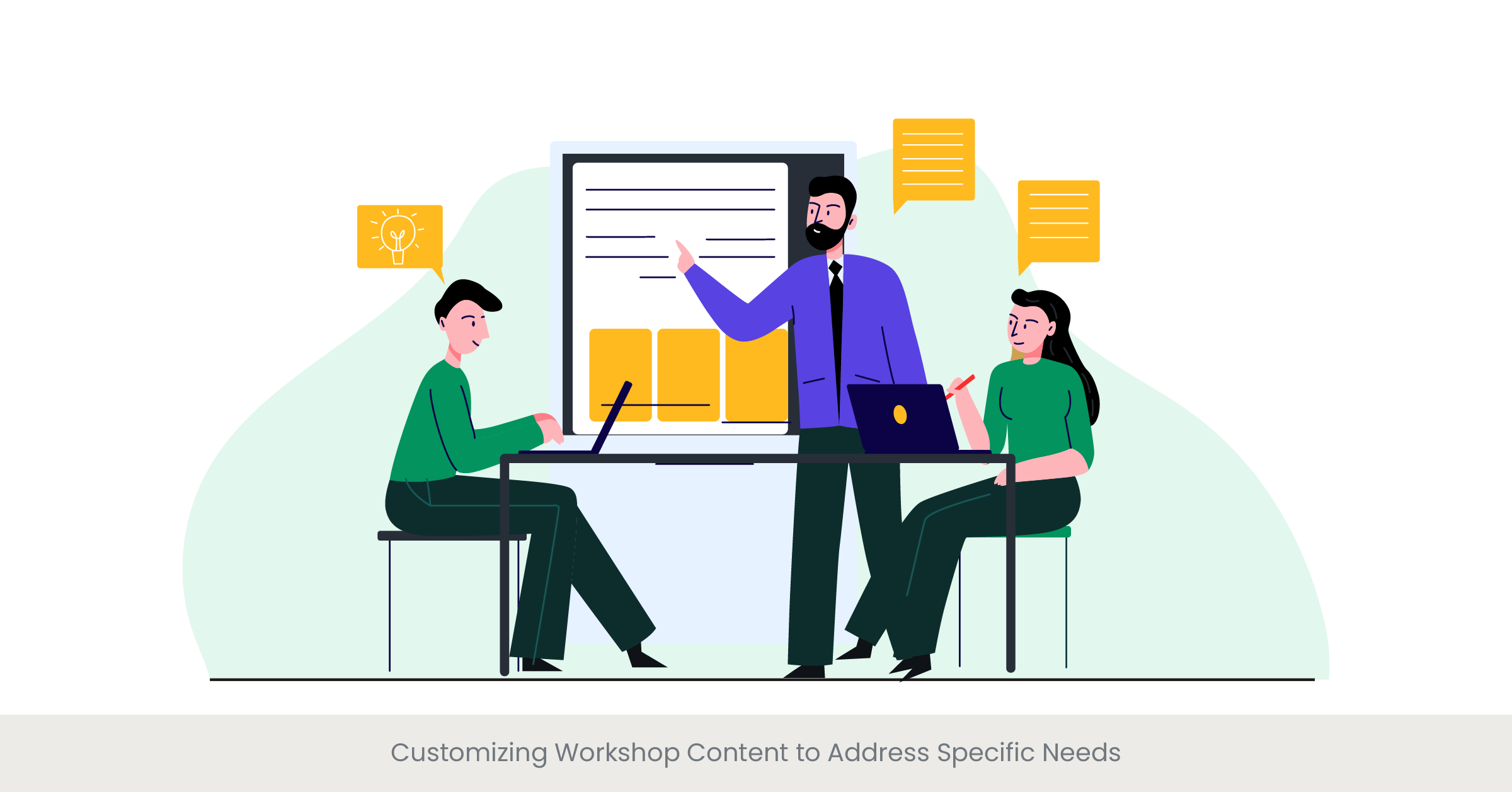
Introduction to Customized Learning
Customizing workshop content to address specific needs is a pivotal aspect of effective presentation skills training. This tailored approach ensures that the content delivered is directly relevant to the participants' professional contexts and personal learning objectives. Such customization enhances the practical application of learned skills and maximizes the workshop's impact.
Background on the Importance of Tailored Content
The principle of customized learning is grounded in the educational theory of constructivism, which posits that learning is most effective when it is relevant to the learner’s own experiences and goals. In presentation workshops, this means adapting the curriculum to include relevant case studies, industry-specific scenarios, and particular challenges that reflect the diverse backgrounds and objectives of the attendees.
Real-World Applications and Examples
For example, a presentation training workshop for healthcare professionals might focus on how to effectively present complex medical data, while a workshop for marketing professionals could concentrate on crafting persuasive and visually engaging presentations. This kind of specificity not only makes the training more applicable to participants’ daily tasks but also more engaging, as the content resonates with their known and anticipated professional challenges.
References and External Validation
Research supports the benefits of customized learning. A study from the Educational Research Association indicates that workshops where content is specifically tailored to the needs of the participants see a 50% greater improvement in relevant skills compared to standard, non-customized training sessions. This highlights the critical role of adaptability and relevance in adult learning and professional development.
Applying Learnings Immediately Through Hands-On Practice
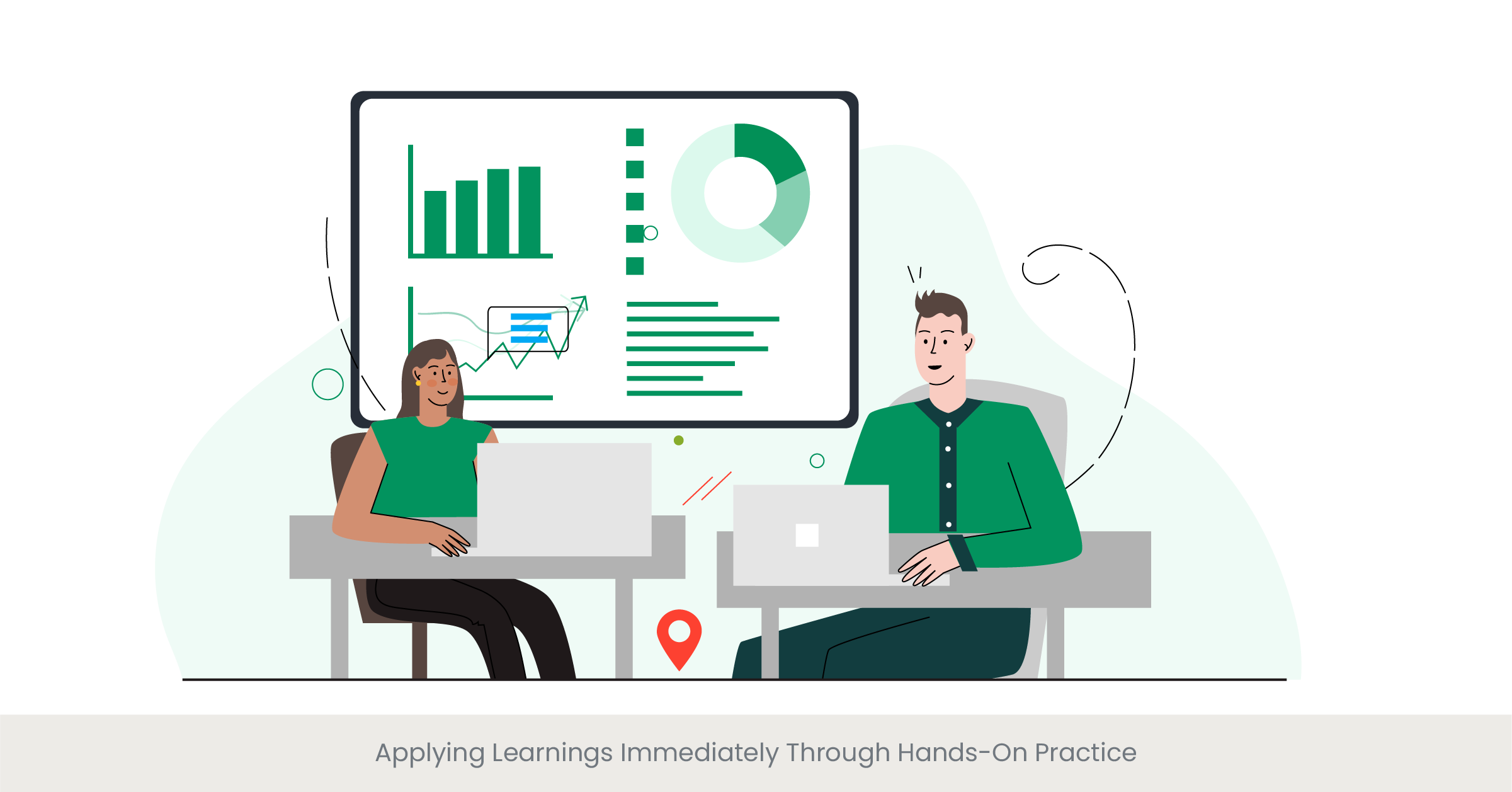
Introduction to Hands-On Practice
Hands-on practice is a cornerstone of interactive workshops, particularly those focused on presentation skills. This approach allows participants to immediately apply what they've learned in a practical setting, reinforcing their new skills through direct experience. Such immediate application is essential for cementing the concepts and techniques covered during the workshop.
Background on the Importance of Immediate Application
The educational value of hands-on practice lies in the learning theory of "learning by doing," which suggests that skills are more effectively acquired through active engagement rather than passive observation. In presentation skills workshops, this means participants are not only learning theoretical knowledge about effective presentations but also getting the opportunity to apply these principles in real-time, which significantly enhances the learning outcome.
Real-World Applications and Examples
For instance, after learning new techniques on how to engage an audience or manage presentation software, participants might be given a scenario or a project to work on during the workshop. This could involve preparing a short presentation incorporating the newly learned skills, followed by delivering it to the group. Such exercises provide invaluable practical experience and allow participants to receive immediate feedback, which is crucial for their development as effective presenters.
References and External Validation
Studies underline the effectiveness of immediate practice in training settings. Research published in the Journal of Educational Psychology shows that students who engaged in hands-on practice during learning sessions were able to recall and apply their knowledge more effectively than those who did not. This highlights the importance of integrating practical exercises into presentation training workshops to ensure that the participants can not only learn but also adeptly apply their new skills.
Frequently Asked Questions
What are the 5 P's of powerful presentation?
The 5 P's of powerful presentation are Plan, Prepare, Practice, Present, and Post-Evaluate. Each step is crucial for creating and delivering effective presentations that engage and inform the audience.
What are the 7 P's of effective presentation?
The 7 P's of effective presentation extend the previous model to include Purpose, People, Place, Preparation, Practice, Presentation, and Post-Evaluation, emphasizing the importance of understanding the audience and context as well as thorough preparation and review.
What is the purpose of a presentation workshop?
The purpose of a presentation workshop is to enhance participants' skills in crafting and delivering presentations. These workshops focus on various aspects such as public speaking, use of presentation software, audience engagement, and feedback utilization, aiming to build confidence and effectiveness in communication.
What are the 4 P's of presentation?
The 4 P's of presentation typically refer to Plan, Prepare, Practice, and Perform. This framework helps presenters organize and deliver their content in a clear, engaging, and professional manner.
How do you train for a presentation?
Training for a presentation involves several key steps: understanding the audience, defining the message, designing the presentation with effective visuals, practicing the delivery, and seeking feedback to refine your approach. Attending presentation skills workshops can provide structured training and expert guidance.
How do you give a presentation workshop?
Giving a presentation workshop involves planning the curriculum, setting learning objectives, using interactive exercises, providing real-time feedback, and facilitating networking opportunities. It's important to adapt the content to the specific needs of the participants and to ensure a supportive, engaging learning environment.
What is the presentation method of training?
The presentation method of training typically involves a trainer delivering content directly to learners, often supported by multimedia tools like PowerPoint. This method can be enhanced by interactive elements such as Q&A sessions, discussions, and practical exercises to improve engagement and retention.
How important is feedback in presentation skills training?
Feedback is crucial in presentation skills training as it helps individuals understand their strengths and areas for improvement. Constructive feedback from peers and facilitators can guide participants in refining their delivery techniques, content organization, and engagement strategies.
Can presentation skills workshops help in career advancement?
Yes, presentation skills workshops can significantly help in career advancement by enhancing key communication skills that are vital in nearly every profession. These workshops improve one's ability to effectively convey ideas, lead meetings, and participate in business discussions, which are critical for leadership roles.
What are the benefits of participating in an interactive workshop compared to online courses?
Participating in an interactive workshop offers real-time interaction, personalized feedback, and networking opportunities, which are often limited in online courses. The hands-on practice and direct engagement with facilitators and peers provide a more immersive learning experience that can lead to deeper understanding and skill development.

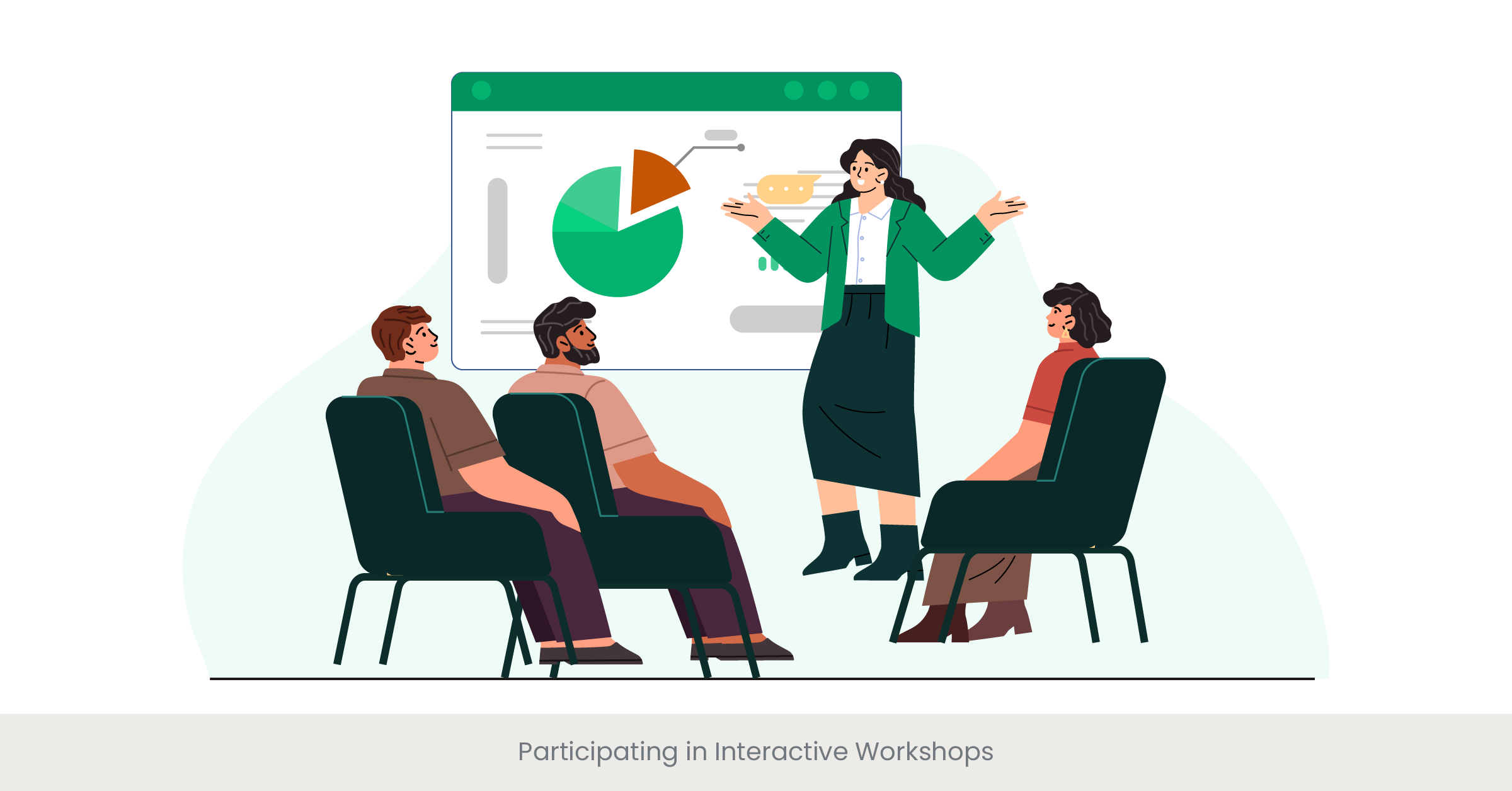

%20(1).jpg)
%20(1).jpg)
